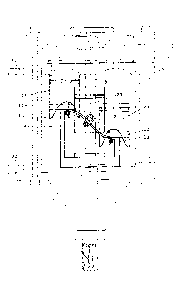Une partie des informations de ce site Web a été fournie par des sources externes. Le gouvernement du Canada n'assume aucune responsabilité concernant la précision, l'actualité ou la fiabilité des informations fournies par les sources externes. Les utilisateurs qui désirent employer cette information devraient consulter directement la source des informations. Le contenu fourni par les sources externes n'est pas assujetti aux exigences sur les langues officielles, la protection des renseignements personnels et l'accessibilité.
L'apparition de différences dans le texte et l'image des Revendications et de l'Abrégé dépend du moment auquel le document est publié. Les textes des Revendications et de l'Abrégé sont affichés :
| (12) Demande de brevet: | (11) CA 2770273 |
|---|---|
| (54) Titre français: | MOTEUR A COMBUSTION INTERNE A CAME A COURSE VARIABLE ET CYCLE VARIABLE (M - VC/S CAM) |
| (54) Titre anglais: | M - VC/S CAM VARIABLE CYCLE/VARIABLE STROKE CAM INTERNAL COMBUSTION ENGINE |
| Statut: | Réputée abandonnée et au-delà du délai pour le rétablissement - en attente de la réponse à l’avis de communication rejetée |
| (51) Classification internationale des brevets (CIB): |
|
|---|---|
| (72) Inventeurs : |
|
| (73) Titulaires : |
|
| (71) Demandeurs : |
|
| (74) Agent: | |
| (74) Co-agent: | |
| (45) Délivré: | |
| (22) Date de dépôt: | 2012-02-28 |
| (41) Mise à la disponibilité du public: | 2013-08-28 |
| Licence disponible: | S.O. |
| Cédé au domaine public: | S.O. |
| (25) Langue des documents déposés: | Anglais |
| Traité de coopération en matière de brevets (PCT): | Non |
|---|
| (30) Données de priorité de la demande: | S.O. |
|---|
A variable cycle / variable stroke profiled circular cam attached to a drive
shaft motivated by
multiple pistons reciprocating within annularly displaced stationary cylinders
. The engine is
designed to require a minimum of engine components to operate thus achieving a
reduction in
manufacturing time, cost, and energy requirements. Due to the low engine
parts, operating
efficiencies will result in lower fuel consumption and lower exhaust
temperatures compared to
existing engines of equivalent horsepower. Of importance is the function of
the variable
cycle/stroke feature profiled on the operating cam attached to the main drive
shaft. The
profiled cam ensures that the intake and compression strokes operate at one
half the piston
travel distance as that of the power and exhaust strokes. The pistons operate
independently
thus allowing for the profiled cam to be configured for a variable four
cycle/stroke operation.
This engine design can use many existing modified components in the
manufacturing process
thus reducing the need for re-tooling requirements. The engine can be a direct
replacement for
all existing engine applications including automotive, aviation, marine and
power tools. The
engine design is capable of expanding from 1 cylinder to a multiple of
cylinders depending on
operational requirements.
Note : Les revendications sont présentées dans la langue officielle dans laquelle elles ont été soumises.
Note : Les descriptions sont présentées dans la langue officielle dans laquelle elles ont été soumises.

2024-08-01 : Dans le cadre de la transition vers les Brevets de nouvelle génération (BNG), la base de données sur les brevets canadiens (BDBC) contient désormais un Historique d'événement plus détaillé, qui reproduit le Journal des événements de notre nouvelle solution interne.
Veuillez noter que les événements débutant par « Inactive : » se réfèrent à des événements qui ne sont plus utilisés dans notre nouvelle solution interne.
Pour une meilleure compréhension de l'état de la demande ou brevet qui figure sur cette page, la rubrique Mise en garde , et les descriptions de Brevet , Historique d'événement , Taxes périodiques et Historique des paiements devraient être consultées.
| Description | Date |
|---|---|
| Demande non rétablie avant l'échéance | 2016-03-02 |
| Le délai pour l'annulation est expiré | 2016-03-02 |
| Réputée abandonnée - omission de répondre à un avis sur les taxes pour le maintien en état | 2015-03-02 |
| Requête visant le maintien en état reçue | 2014-02-28 |
| Demande publiée (accessible au public) | 2013-08-28 |
| Inactive : Page couverture publiée | 2013-08-27 |
| Inactive : CIB attribuée | 2012-04-11 |
| Inactive : CIB en 1re position | 2012-04-11 |
| Inactive : Correspondance - PCT | 2012-03-27 |
| Inactive : CIB attribuée | 2012-03-23 |
| Inactive : CIB attribuée | 2012-03-23 |
| Inactive : Certificat de dépôt - Sans RE (Anglais) | 2012-03-16 |
| Inactive : Lettre officielle | 2012-03-16 |
| Demande reçue - nationale ordinaire | 2012-03-16 |
| Inactive : Lettre officielle | 2012-03-16 |
| Déclaration du statut de petite entité jugée conforme | 2012-02-28 |
| Date d'abandonnement | Raison | Date de rétablissement |
|---|---|---|
| 2015-03-02 |
Le dernier paiement a été reçu le 2014-02-28
Avis : Si le paiement en totalité n'a pas été reçu au plus tard à la date indiquée, une taxe supplémentaire peut être imposée, soit une des taxes suivantes :
Les taxes sur les brevets sont ajustées au 1er janvier de chaque année. Les montants ci-dessus sont les montants actuels s'ils sont reçus au plus tard le 31 décembre de l'année en cours.
Veuillez vous référer à la page web des
taxes sur les brevets
de l'OPIC pour voir tous les montants actuels des taxes.
| Type de taxes | Anniversaire | Échéance | Date payée |
|---|---|---|---|
| Taxe pour le dépôt - petite | 2012-02-28 | ||
| TM (demande, 2e anniv.) - petite | 02 | 2014-02-28 | 2014-02-28 |
Les titulaires actuels et antérieures au dossier sont affichés en ordre alphabétique.
| Titulaires actuels au dossier |
|---|
| ANDRE JOHN MEUSE |
| Titulaires antérieures au dossier |
|---|
| S.O. |